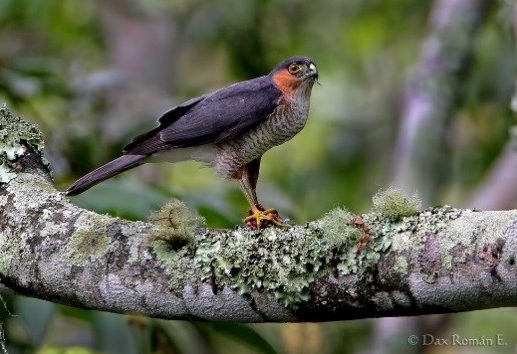Birdfinding.info ⇒ A localized endemic form of Sharp-shinned Hawk, the least endangered of the three West Indian forms. Most numerous in the Dominican Republic’s Cordillera Central and Sierra de Bahoruco. Sites where it can often be found include Ébano Verde, Zapotén, Los Arroyos, Alcoa Road, and the Rabo de Gato Trail.
“Hispaniolan Sharp-shinned Hawk”
Accipiter striatus striatus
Endemic to Hispaniola, where it is an uncommon resident of forests across the island, mainly in mountains and foothills, but also in the eastern lowlands.
Apparently healthy populations persist in the Cordillera Central, Sierra de Bahoruco, and Massif de la Selle. Records indicate that populations also remain in several less-visited areas, including the northern ranges of Haiti and the Dominican Republic, the Sierra de Neiba, and the Tiburon Peninsula west to the Massif de la Hotte.
Has also been reported occasionally in the east at Los Haitises National Park and points south and east to Del Este National Park and Punta Cana—although some reported sightings from these locations may actually be of vagrant “Northerns.”
Identification
Adult typically has dark slate-gray upperparts, rufous cheeks, mostly white underparts with fine rusty bars, and rufous thighs (often concealed).
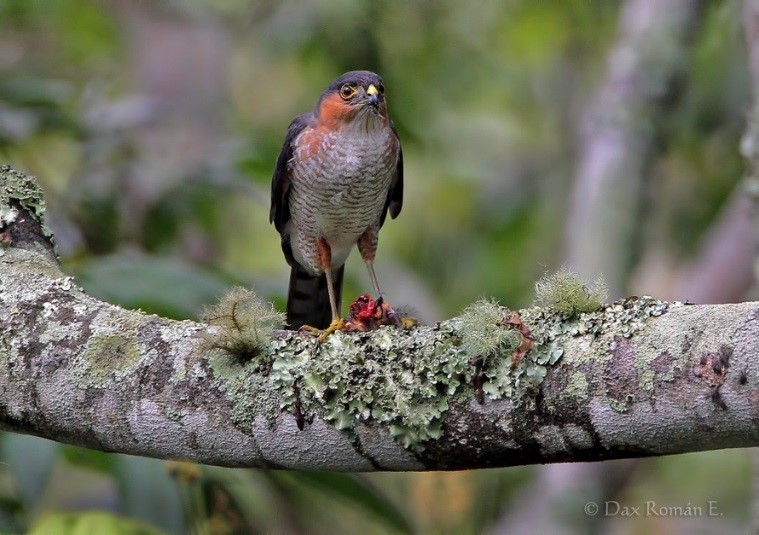
“Hispaniolan Sharp-shinned Hawk,” A. s. striatus. (Ébano Verde Scientific Reserve, Dominican Republic; May 4, 2013.) © Dax M. Román E.
Based on historically collected specimens, it is slightly smaller than the “Northern Sharp-shinned Hawk”, which occurs as a migrant and winter visitor on the northern Bahamas and Cuba, and is a casual vagrant to other Caribbean islands, including Hispaniola.
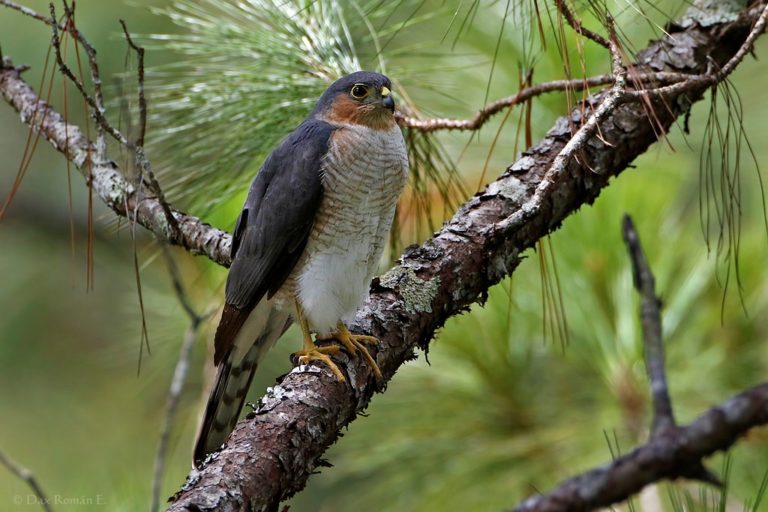
“Hispaniolan Sharp-shinned Hawk,” A. s. striatus. (Paso Bajito, Dominican Republic; June 13, 2015.) © Dax M. Román E.
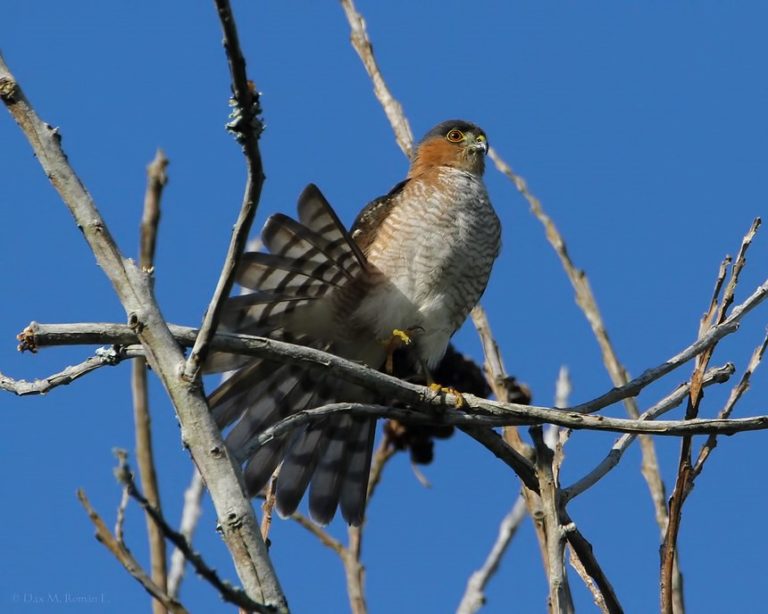
“Hispaniolan Sharp-shinned Hawk,” A. s. striatus, fanning its tail. (Dominican Republic; March 27, 2013.) © Dax M. Román E.
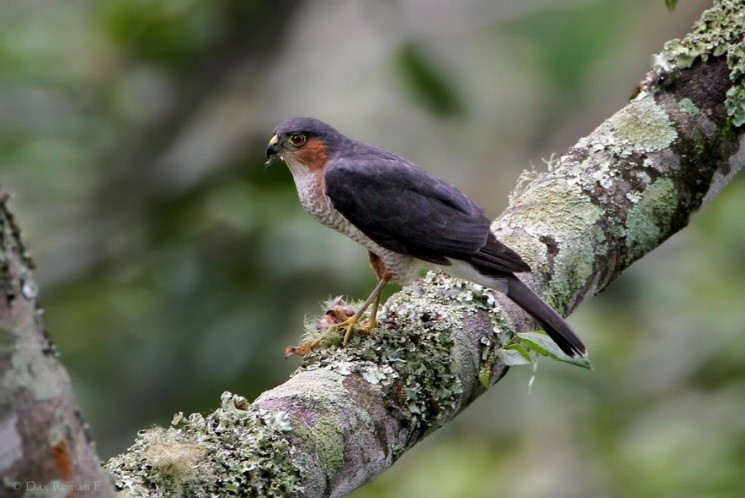
“Hispaniolan Sharp-shinned Hawk,” A. s. striatus. (Ébano Verde Scientific Reserve, Dominican Republic; May 4, 2013.) © Dax M. Román E.
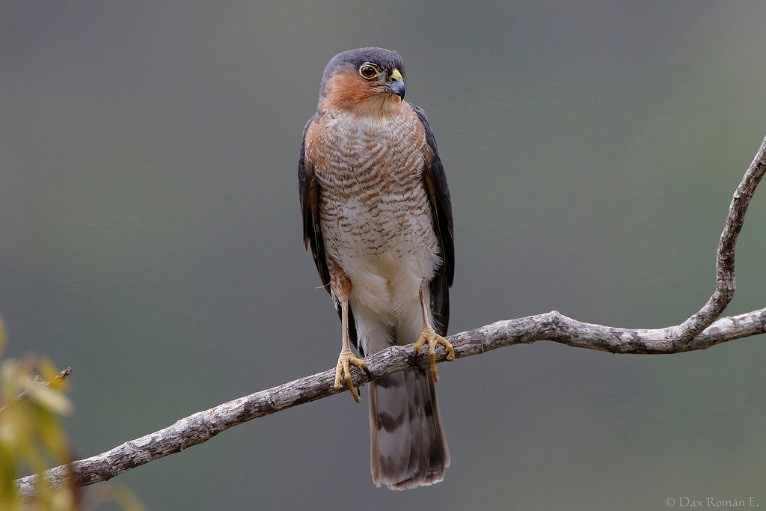
“Hispaniolan Sharp-shinned Hawk,” A. s. striatus. (Zapotén, Dominican Republic; May 1, 2015.) © Dax M. Román E.
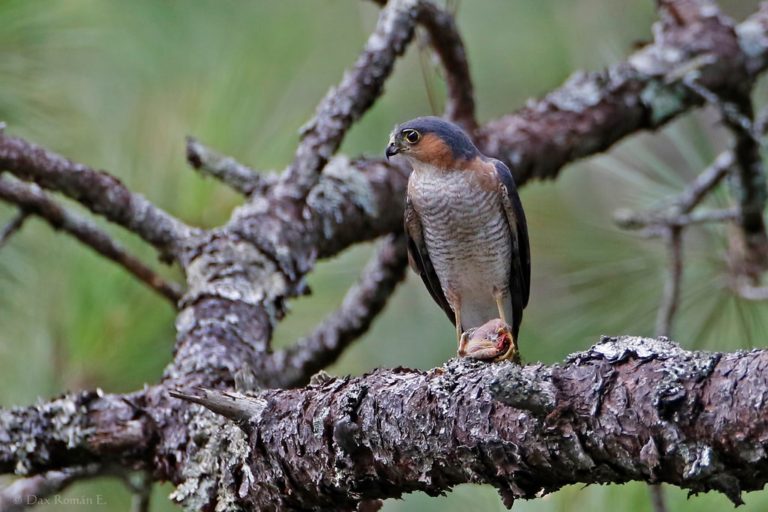
“Hispaniolan Sharp-shinned Hawk,” A. s. striatus. (Paso Bajito, Dominican Republic; June 13, 2015.) © Dax M. Román E.
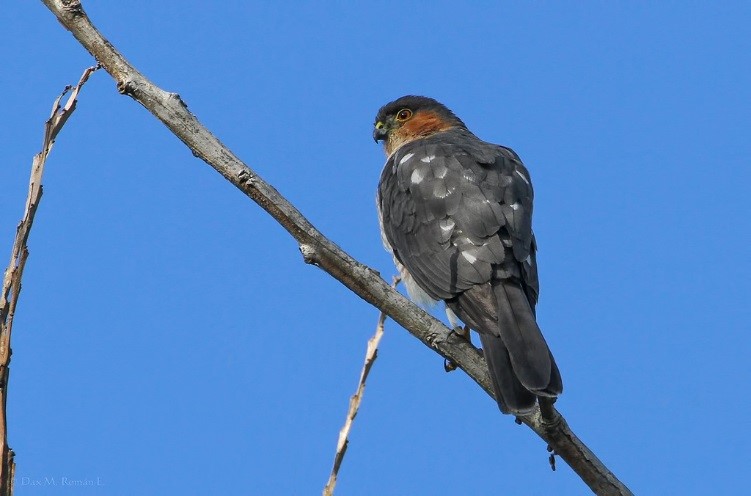
“Hispaniolan Sharp-shinned Hawk,” A. s. striatus, showing whitish patches during molt. (Dominican Republic; March 27, 2013.) © Dax M. Román E.
Immatures are brown above and mostly whitish below, with brown streaks and chevrons on the breast.
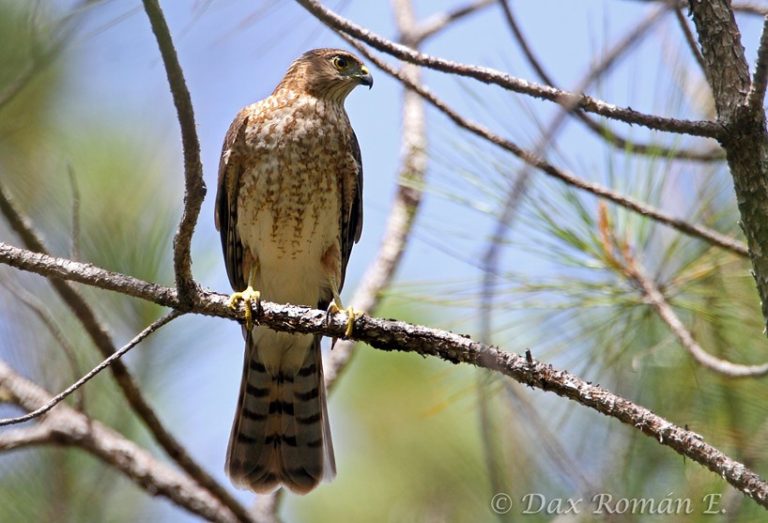
“Hispaniolan Sharp-shinned Hawk,” A. s. striatus, immature. (Alcoa Road, Dominican Republic; August 3, 2012.) © Dax M. Román E.
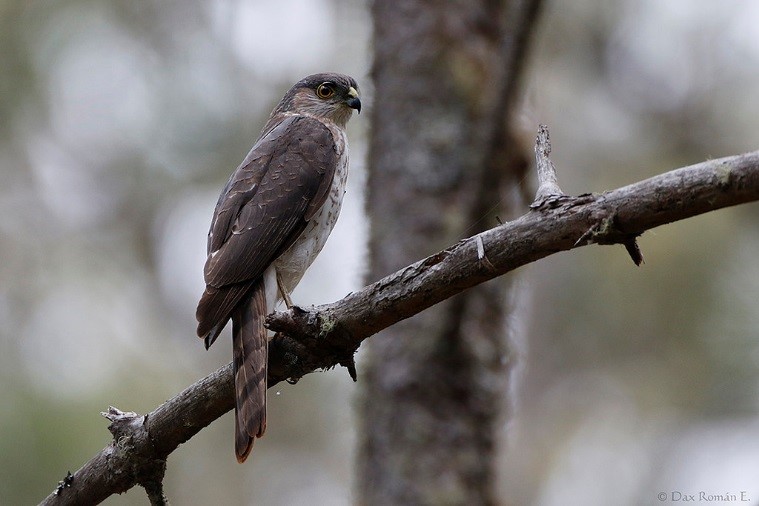
“Hispaniolan Sharp-shinned Hawk,” A. s. striatus, immature—note chevron markings on underparts. (Los Arroyos, Dominican Republic; May 1, 2015.) © Dax M. Román E.
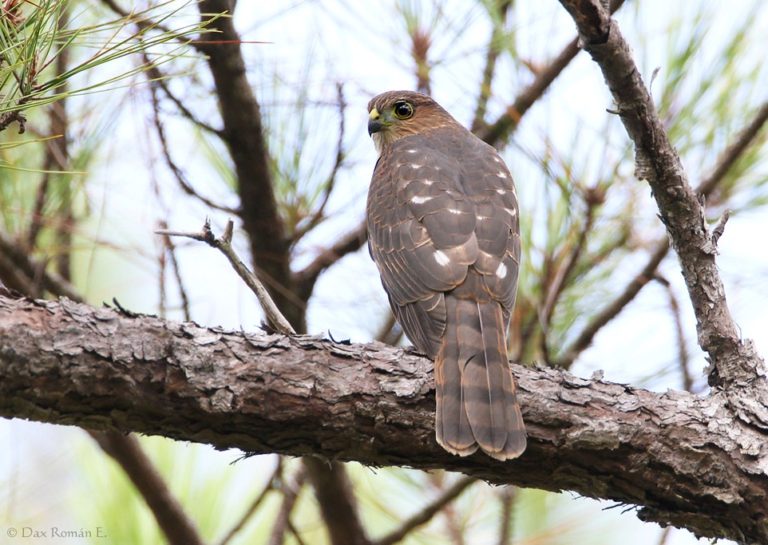
“Hispaniolan Sharp-shinned Hawk,” A. s. striatus, immature, showing whitish patches during molt. (Alcoa Road, Dominican Republic; August 3, 2012.) © Dax M. Román E.
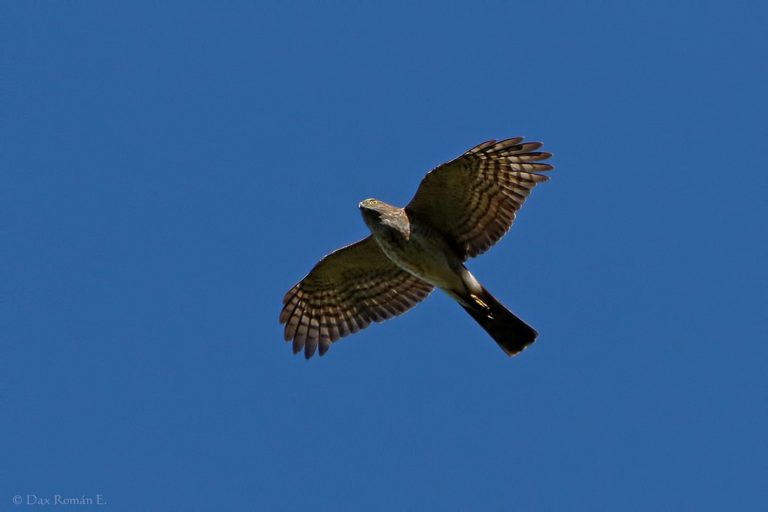
“Hispaniolan Sharp-shinned Hawk,” A. s. striatus, immature. (Ébano Verde Scientific Reserve, Dominican Republic; January 20, 2016.) © Dax M. Román E.
Cf. “Northern Sharp-shinned Hawk”. Adult “Hispaniolans” can be reliably distinguished from adult “Northerns” by their mostly whitish underparts combined with solid-rufous cheeks. “Northern” shows a high degree of variability, including some individuals with very pale underparts, but such birds also have pale cheeks.
Habitat should be a helpful indicator as well. The resident “Hispaniolan” primarily occurs in and around extensive, mostly intact tracts of native forest, whereas vagrant migratory “Northerns” could be expected in a wider range of habitats. Sharp-shins found along the coast of Hispaniola are presumably more likely to be migrants.
Notes
Monotypic form, one of four potentially distinct forms of Sharp-shinned Hawk. The possibility that it may qualify for recognition as a separate species seems to have eluded the attention of ornithologists.
References
eBird. 2019. eBird: An online database of bird distribution and abundance. Cornell Lab of Ornithology, Ithaca, N.Y. http://www.ebird.org. (Accessed April 13, 2019.)
Ferguson-Lees, J., and D.A. Christie. 2001. Raptors of the World. Houghton-Mifflin, Boston.
Latta, S., C. Rimmer, A. Keith, J. Wiley, H. Raffaele, K. McFarland, and E. Fernandez. 2006. Birds of the Dominican Republic and Haiti. Princeton University Press, Princeton, N.J.
Raffaele, H., J. Wiley, O. Garrido, A. Keith, and J. Raffaele. 1998. A Guide to the Birds of the West Indies. Princeton University Press, Princeton, N.J.
